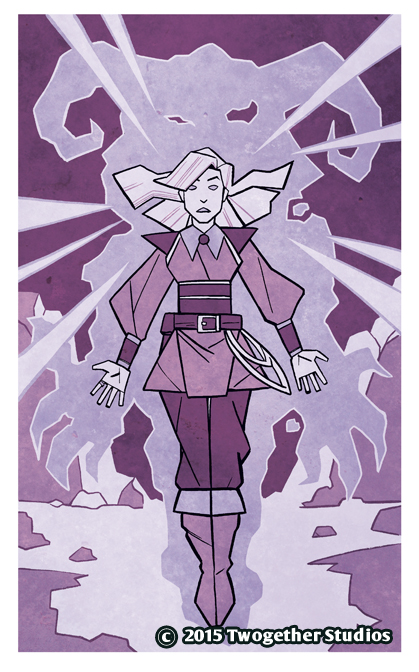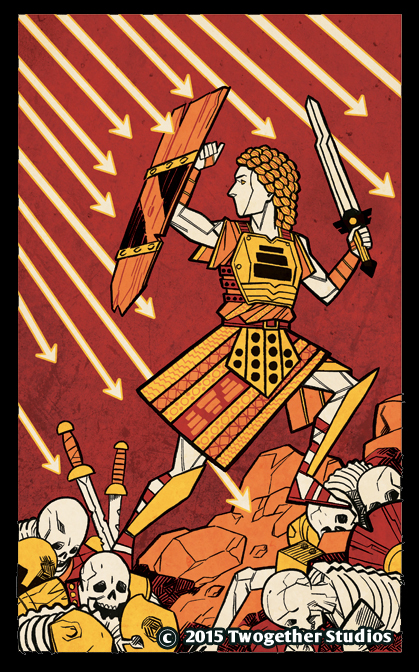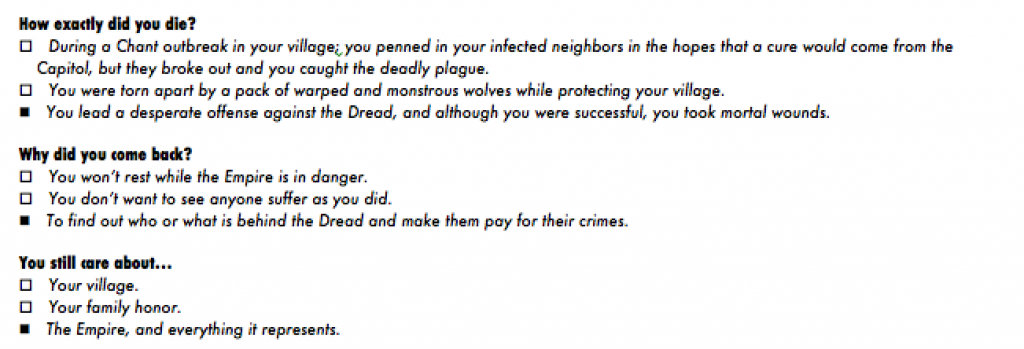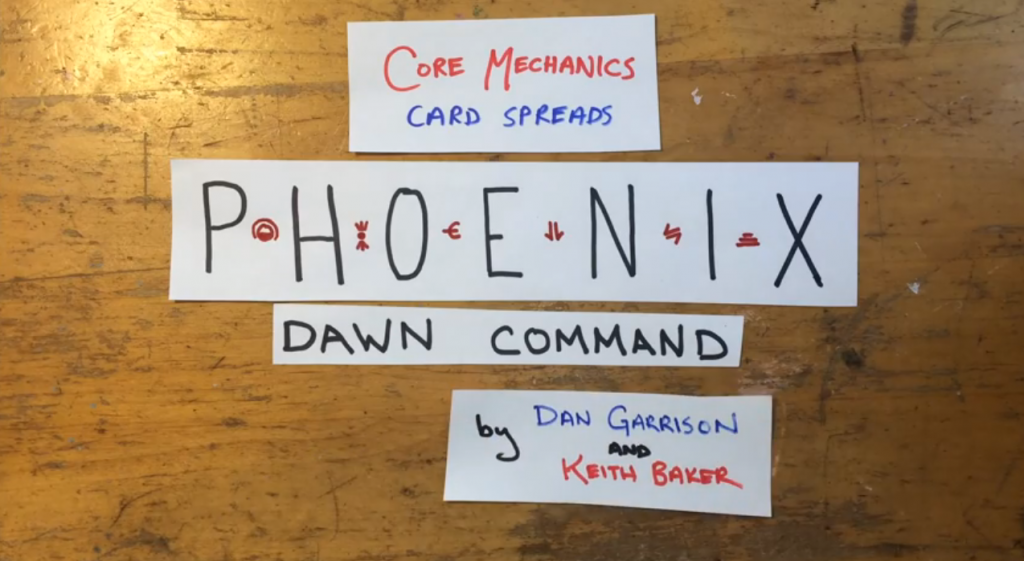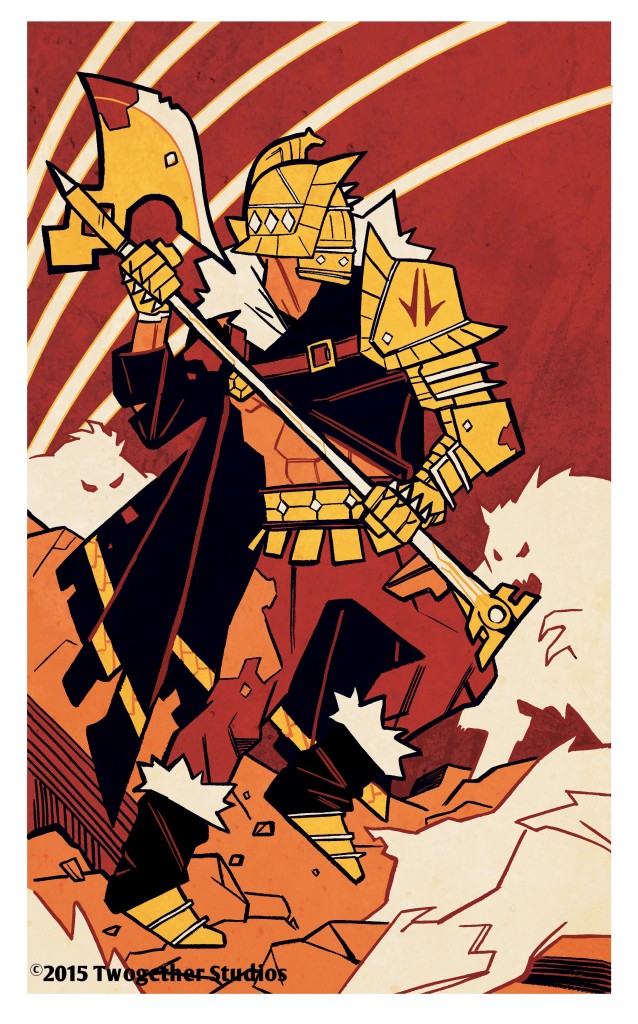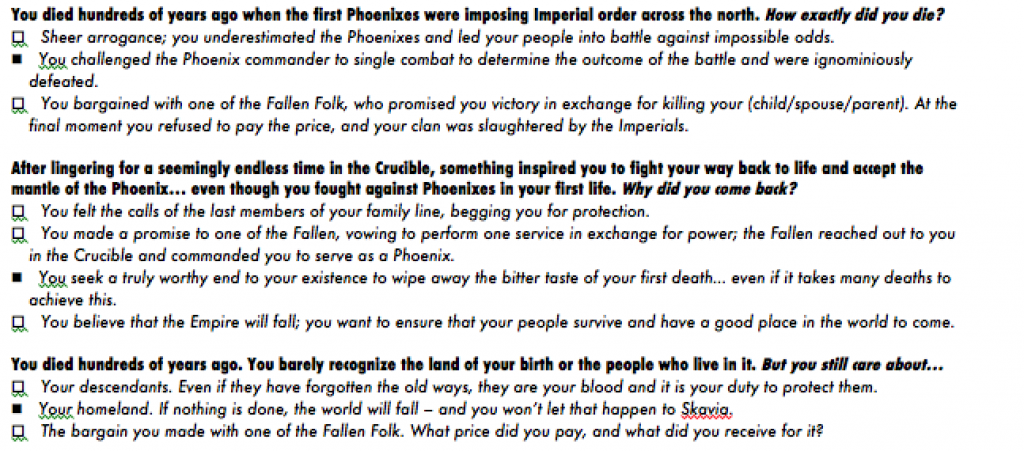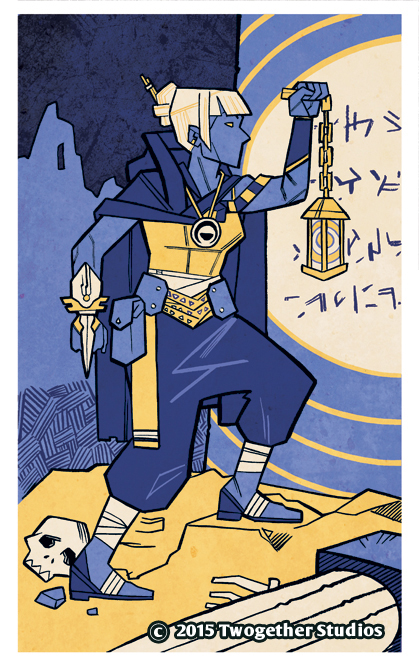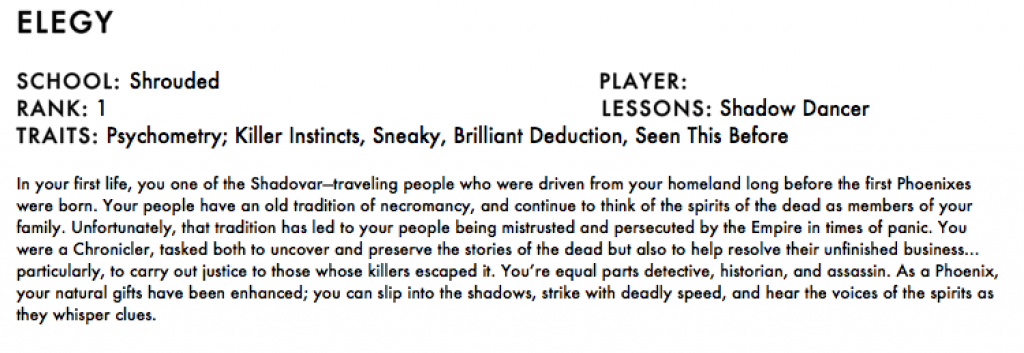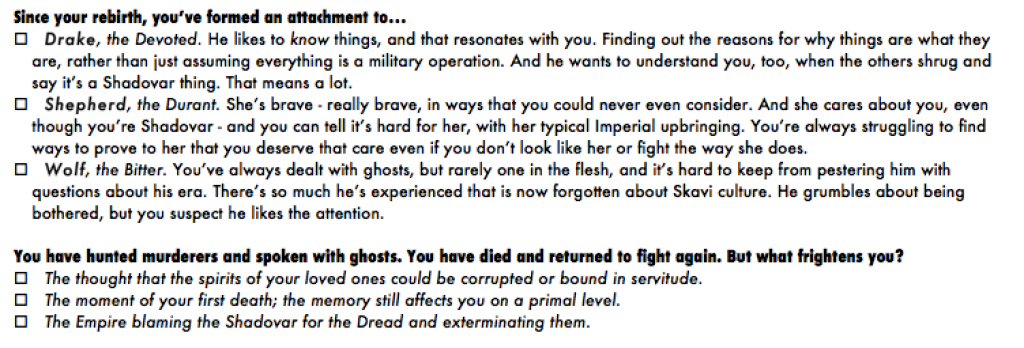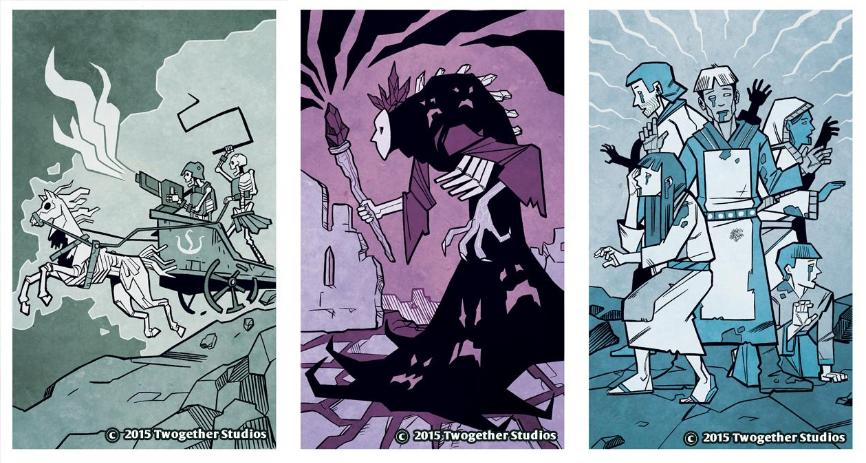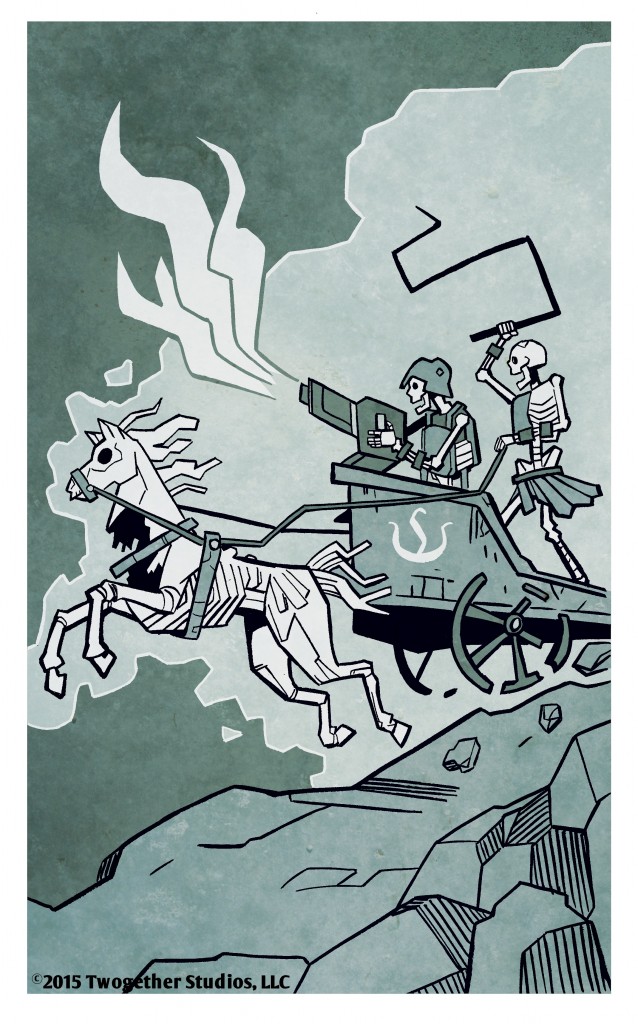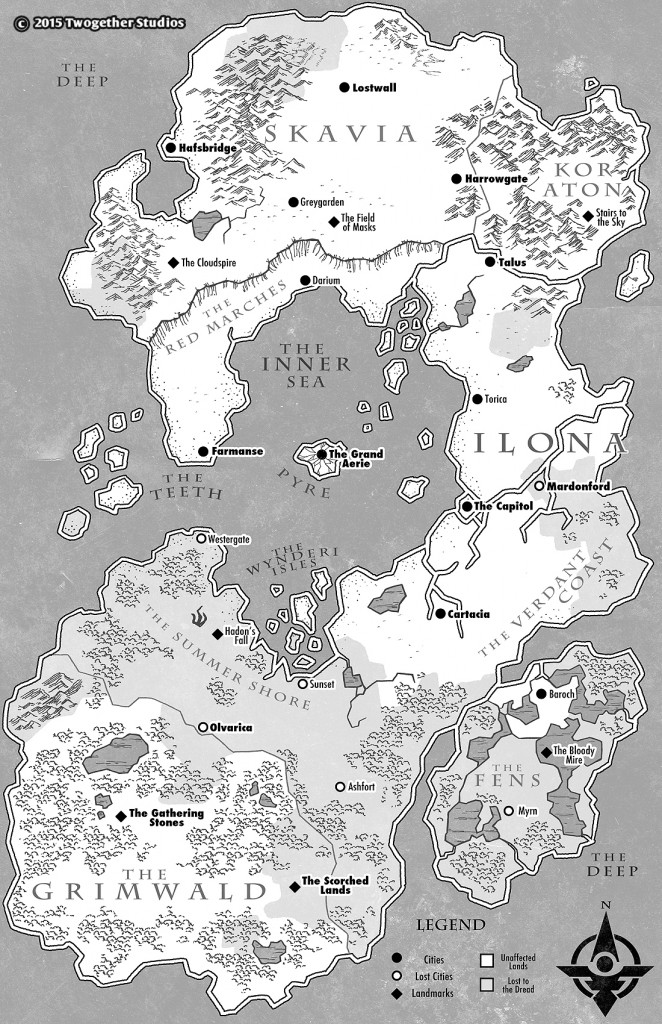 Up to this point I’ve mainly talked about the story of Phoenix: Dawn Command at the highest level: The Empire is fighting the Dread (and losing). This is a good one sentence description of the concept. A group of nations is facing a terrifying supernatural threat. But it’s a statement that implies a clash of monolithic forces and paints a very simplistic view of the setting – and I want to dig a little deeper. Because both the Empire and the Dread are anything but monolithic or simple.
Up to this point I’ve mainly talked about the story of Phoenix: Dawn Command at the highest level: The Empire is fighting the Dread (and losing). This is a good one sentence description of the concept. A group of nations is facing a terrifying supernatural threat. But it’s a statement that implies a clash of monolithic forces and paints a very simplistic view of the setting – and I want to dig a little deeper. Because both the Empire and the Dread are anything but monolithic or simple.
Over the last three years the people of the Empire have suffered a wave of attacks and supernatural terrors. They refer to this as The Dread. But really, “The Dread” means “Anything we don’t understand.” Part of the terror of the Dread is that there’s no logic to it – no obvious connection between its many manifestations.
- The Bones are the skeletons of soldiers from past wars who have risen up to fight the living. They retain the skills of the former lives and fight with military discipline. In the south, a legion of Bones has been steadily advancing and slaughtering everything in its path… and no one has found a way to stop it. Smash the Bones and they just rise again.
- The Chant can start anywhere. Someone begins chanting and trying to kill those around them, and this behavior spreads rapidly. That’s about all that’s known. How does it spread? Is it from physical contact or hearing the Chant? How does it get started?
- The Fallen Folk are figures from Skavi folklore, mysterious and powerful beings who dwell in the Dusk and bargain with mortals. Some feed on greed or fear. Others can offer great power to a clever warlock. The first Phoenixes drove the Fallen from the world and forbade any dealings with them… and now the Fallen have returned.
These are just three manifestations of the Dread… and the only obvious thing they have in common is they’ve all appeared (or re-appeared) in the last few years. The Fallen don’t work with the Bones. Neither Fallen or Bones appear to have anything to do with the Chant… or the skinchangers… or the hauntings… and so on. As a Phoenix you will be fighting manifestations of the Dread, but the most important thing you can do in any mission is to understand the enemy. Stopping a particular outbreak of the Chant is a minor victory if you can’t understand why it’s happening in the first place or how to help mortals deal with the next outbreak. Likewise, we say that one of the major drives of the story in Phoenix is to solve the mystery of the Dread. But it’s not a mystery with a single answer; you won’t finish one adventure and know EVERYTHING. Instead, it’s a puzzle with many different pieces, one that could take multiple story arcs to completely unravel. The seven-mission adventure path that ships with the game deals with a particular subset of the Dread, and you can solve that particular puzzle… but you’ll still be a long, long way from a complete understanding of the Dread.
In a way, it’s a Lovecraftian scenario. This is a world where magic exists, and yet it is something that has been buried and forgotten. It is a dangerous force that often causes great harm to those who delve into its secrets. And now the stars are right and terrible things are happening across the world… and you need to investigate these threats and deal with them before your world is destroyed. It’s simply the case that those threats are actively in the process of destroying the world – and you’re an investigator with tremendous personal power and seven lives.
Next up: The Empire. This conjures an image of a tightly unified civilization with a monolithic culture. In fact, the name is quite deceptive. Centuries ago the nations of the Daylit World were divided. Each practiced different forms of magic. Many fought each other, or simply preyed on their own people. The first Phoenixes put a stop to this, using their power to systematically conquer and unite the disparate nations, and to end injustice and the use of magic. They called this the Pyrean Empire. But it didn’t last. Resentment grew and eventually many people rebelled against their immortal leaders. The civil war that followed was bloody, and in the end the Phoenixes abdicated to bring an end to the destruction. They wouldn’t rule the Empire; they would simply protect it from the sidelines. And so they did, for a time. But the new Empire no longer needed them, and they stopped returning from death. Their numbers dwindled and faded. Many of the changes they had instituted stayed in effect. Magic remained abolished. The peace between nations continued, by and large. The Empire was a loose alliance, but it lasted through two centuries of relative prosperity… until the Dread.
So we call it the Empire, and there is an Imperial Army, Imperial roads, and other unified services… But every province retains its distinct culture, and some cleave more tightly to Imperial customs than others. Meanwhile, as of a few years ago the Phoenixes had become legends. Now they are finally returning, but they are few in number and opinions are divided. Are they heroes of old and the only hope against the Dread? Or are they themselves harbingers of doom, would-be tyrants, or manifestations of the Dread itself? Your actions over the course of the campaign will determine the role that Phoenixes will play within the Empire. Will you try to re-establish the order imposed by your predecessors? Will you stop other Phoenixes if they follow this path?
The upshot of all of this is that there’s nothing simple about “The Empire fighting the Dread.” This is the conflict that will drive your initial missions… but it’s a setting with a great deal of depth and complexity, and there are many stories to be told. And just like Eberron, this is your world as well as mine. Dan and I are creating a foundation to work with, but it’s always up to you to decide what to keep and what to change… and quite often we’ll offer suggestions as to changes you can make. We want our setting to inspire stories, not to limit them.
We’ve got five more days left in the Kickstarter campaign and we still need your help to reach our stretch goals – especially the mark that will let us add 40 pages to the sourcebook! Take a look.

